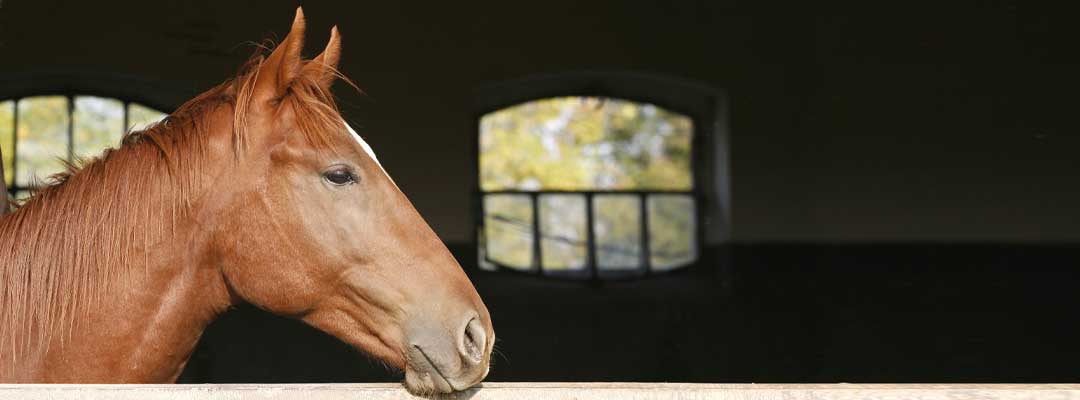Equine Biosecurity Reminders
Recommendations from The Equine Disease Communication Center

Like COVID-19, equine diseases such as equine herpesvirus and equine influenza are highly infectious and spread by contact or by inhalation of micro-organisms on particles in the air or water. When an infected horse coughs or sneezes, tiny particles are spread. Viral diseases can also be spread by horse-to-horse contact or by contamination on commonly touched surfaces. Bacterial diseases such as Strangles are also transmitted through contact -- from horse to horse or by horses touching common areas such as watering systems, tack, and grooming equipment. Both viruses and bacteria can be spread by humans working with an affected horse and carrying it to other horses.
Keeping horses separated is one of the most important steps in biosecurity to help prevent disease spread. When an infectious disease is suspected or confirmed, all horses in the same facility or on the same premise are at risk of becoming infected. Keeping horses separated in stalls or at a separate facility is crucial to stop the transmission of diseases to other horses. With very contagious diseases like equine herpesvirus, a quarantine is often necessary to stop all horse movement and limit movement of people on the affected premises.
Social distancing only works if appropriate sanitation measures and careful separation of tools and equipment are in place while caring for infected horses. Just as hand washing is needed to help control Covid-19, it is important that hands, clothing and any objects that come in contact with more than one horse are sanitized between horses.
If a horse is suspected or confirmed to have an infectious disease, horse owners should employ the following protocol to help prevent disease spread.
- Immediately isolate the horse showing signs of an infection.
- Implement movement restrictions of the affected horse and possibly exposed horses until the situation is evaluated.
- Contact your veterinarian or the event veterinarian and ask what you should do.
- Inventory horses, identify and isolate potentially exposed horses, and immediately implement health monitoring: take temperature twice daily (a temperature above 101.5° F suggests the horse has an infectious disease) and observe for clinical signs of depression or abnormal behavior.
- When more than one owner or caretaker is involved, establish communication with all parties.
Additional protocol detail is available in “What Horse Owners Should Do During the First 30 Minutes of a Suspected Infectious Disease Outbreak.” Save the document as a PDF to your mobile device for future reference at https://aaep.org/sites/default/files/WhatToDo_EDCC_Final.pdf.
About the author: This content was originally provided by The Equine Disease Communication Center, with minor additions from Valley Vet Supply.


